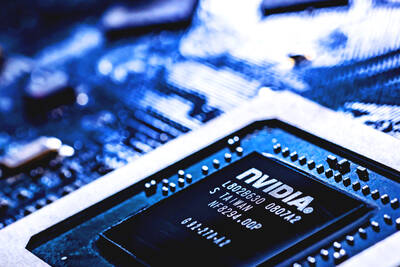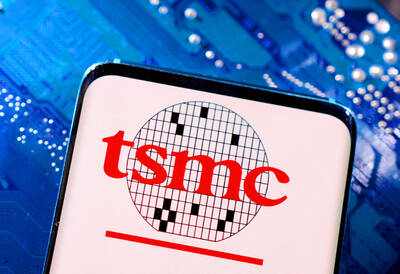Taipei Times (TT): What is Amtran Technology Co Ltd’s (瑞軒) major strategy to sell its TVs to consumers outside the US market, where after five years on the market Vizio was No. 1 vendor in the second quarter last year?
Alpha Wu (吳春發): We are starting with emerging markets like China. We began exporting flat-panel TVs to China for other companies earlier this year, but we do not have any plan to sell Vizio there anytime soon. China is a market full of different brands with a wide range of selling prices.
This year, we will step up efforts to promote the Vizio brand at home after making our debut last summer. Next year, we aim to sell between 60,000 and 100,000 liquid-crystal-display [LCD] TV sets [in Taiwan, about 10 percent of the overall 800,000 LCD TV units sold in the country annually].
Earlier this month, we started offering Vizio TVs in Japan, a mature market. A 42-inch high-definition [HD] LCD TV is priced ¥99,900 [US$922] per unit.
The model has received a strong response from Japanese consumers. We are planning to supply more models emphasizing design to cater to Japanese consumers.
We are also planning to make a foray into European markets by supplying TVs to other companies, rather than with Vizio sets.
TT: Some analysts said LG Display Co Ltd may benefit more from the recent US$48 million joint venture with Amtran in China, Suzhou Raken Technology Ltd (蘇州樂軒). What do you think? Suzhou Raken assembles LCD panel modules and TVs.
Wu: The partnership will help Amtran cut costs significantly, including on royalties and marketing spending.
Most of all, the cooperation guarantees that Amtran will secure sufficient TV panel supply, especially in the high season.
Most second-tier TV makers usually suffer [shipment reduction] because of supply constraints.
Besides, the partnership also helps us expand sale channels, including to stores such as BestBuy, one of the biggest US retailers, by supplying TVs to LG Electronics Inc.
Now Amtran sells most Vizio TVs at Wal-Mart and Costco outlets.
Suzhou Raken has also become a major manufacturing site of Amtran for the Chinese market.
TT: Will spreading economic slowdown hurt Amtran’s TV sales?
Wu: To a certain extent, changes in the global economic situation are not a bad thing. Among other things, it will give Amtran an opportunity to expand its growth.
Consumers will change their shopping habits. They will either go to marketplaces offering bargain deals, or to stores offering high-end models.
Amtran will benefit from this change.
Moreover, the economic slowdown caused a market consolidation, which will be good for major TV brands after market order has been restored.
TT: What is Amtran’s plan to expand the current product lineup?
Wu: We are seeing growing demand for flat-panel TVs with screen sizes between 32 inches and 37 inches because of the economic slowdown. Demand for 19-inch and 26-inch TVs is also quite strong.
So, we plan to expand our product portfolio to those segments next year. We will offer 19-inch and 26-inch LCD TVs next year to increase our competitiveness. [In the second quarter, Amtran began selling 32-inch plasma display panel TVs.]
Amtran also plans to launch TVs with screens bigger than 50 inches, which will be one of our focuses next year.
Next year, all Vizio TVs will be full HD models. Next quarter, all 32-inch and 37-inch TVs will be full HD.

When Lika Megreladze was a child, life in her native western Georgian region of Guria revolved around tea. Her mother worked for decades as a scientist at the Soviet Union’s Institute of Tea and Subtropical Crops in the village of Anaseuli, Georgia, perfecting cultivation methods for a Georgian tea industry that supplied the bulk of the vast communist state’s brews. “When I was a child, this was only my mum’s workplace. Only later I realized that it was something big,” she said. Now, the institute lies abandoned. Yellowed papers are strewn around its decaying corridors, and a statue of Soviet founder Vladimir Lenin

UNIFYING OPPOSITION: Numerous companies have registered complaints over the potential levies, bringing together rival automakers in voicing their reservations US President Donald Trump is readying plans for industry-specific tariffs to kick in alongside his country-by-country duties in two weeks, ramping up his push to reshape the US’ standing in the global trading system by penalizing purchases from abroad. Administration officials could release details of Trump’s planned 50 percent duty on copper in the days before they are set to take effect on Friday next week, a person familiar with the matter said. That is the same date Trump’s “reciprocal” levies on products from more than 100 nations are slated to begin. Trump on Tuesday said that he is likely to impose tariffs

HELPING HAND: Approving the sale of H20s could give China the edge it needs to capture market share and become the global standard, a US representative said The US President Donald Trump administration’s decision allowing Nvidia Corp to resume shipments of its H20 artificial intelligence (AI) chips to China risks bolstering Beijing’s military capabilities and expanding its capacity to compete with the US, the head of the US House Select Committee on Strategic Competition Between the United States and the Chinese Communist Party said. “The H20, which is a cost-effective and powerful AI inference chip, far surpasses China’s indigenous capability and would therefore provide a substantial increase to China’s AI development,” committee chairman John Moolenaar, a Michigan Republican, said on Friday in a letter to US Secretary of

Taiwan Semiconductor Manufacturing Co’s (TSMC, 台積電) market value closed above US$1 trillion for the first time in Taipei last week, with a raised sales forecast driven by robust artificial intelligence (AI) demand. TSMC saw its Taiwanese shares climb to a record high on Friday, a near 50 percent rise from an April low. That has made it the first Asian stock worth more than US$1 trillion, since PetroChina Co (中國石油天然氣) briefly reached the milestone in 2007. As investors turned calm after their aggressive buying on Friday, amid optimism over the chipmaker’s business outlook, TSMC lost 0.43 percent to close at NT$1,150